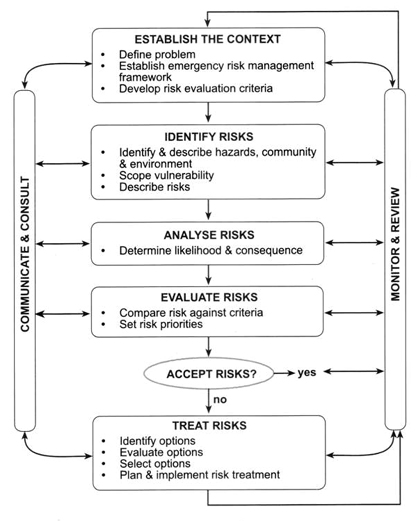Why a 'process'?
This subject is intended to provide you with the skills and knowledge to undertake a risk assessment and produce a risk assessment report, using a risk assessment process . The process is a series of steps for assessing risks. 'But why use a process?', I can hear you say. 'Why not just figure out what's going to happen?'
We need to use a rational process to assess risks for a number of reasons.
- Firstly , in order to explain to others what you will be doing, and how they can participate, you need to be able to show them the way in which you will be doing it.
- Secondly, if you do not use a rational process, it is likely that you will miss some important aspects of the risk assessment.
- Thirdly, in order to justify the validity of your results, you will have to demonstrate that you have done a thorough assessment, and the use of a rational process is part of this justification.
For thought
It has probably occurred to you that the three reasons above are valid for other types of analysis, other than risk assessment. Other situations that you are familiar with where a rational process is necessary include:
- Diagnostic activities (e.g. detection of faults in automobiles, computers, people!);
- Activities that require a sequence of checks (e.g. pilot checks for take off and landing).
Now that I have explained the need to adopt a rational process, what might this process look like?
The Emergency Risk Management risk assessment process is outlined in Figure 2.3.

Figure 2.3
Emergency Risk Management Process
Source: Emergency Management Australia, 2000, Emergency risk management applications guide, EMA: Canberra, p. 6.
This process should commence with the first step, ie. Establish the Context and should continue step by step, following each step consecutively. Information from each step is used in subsequent steps.